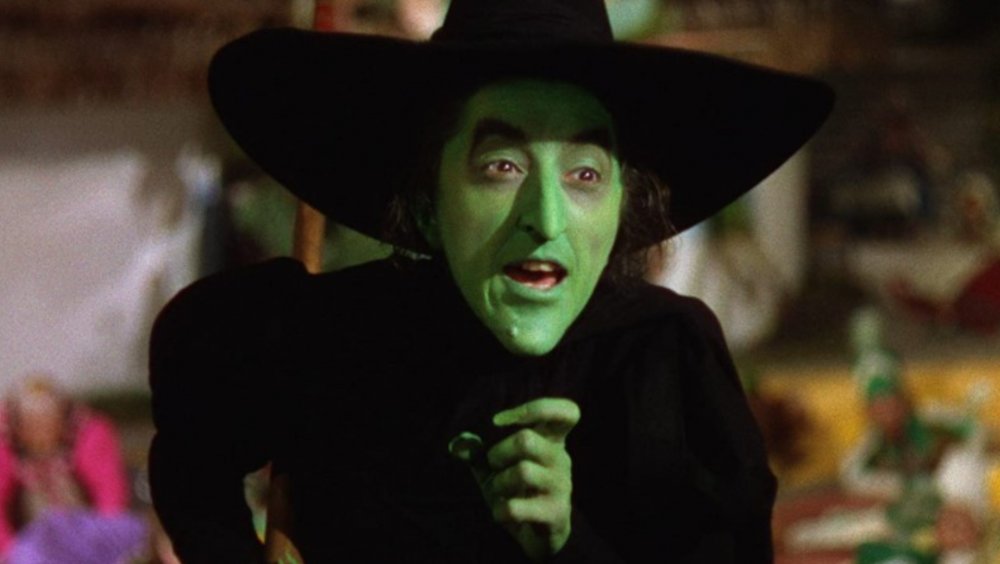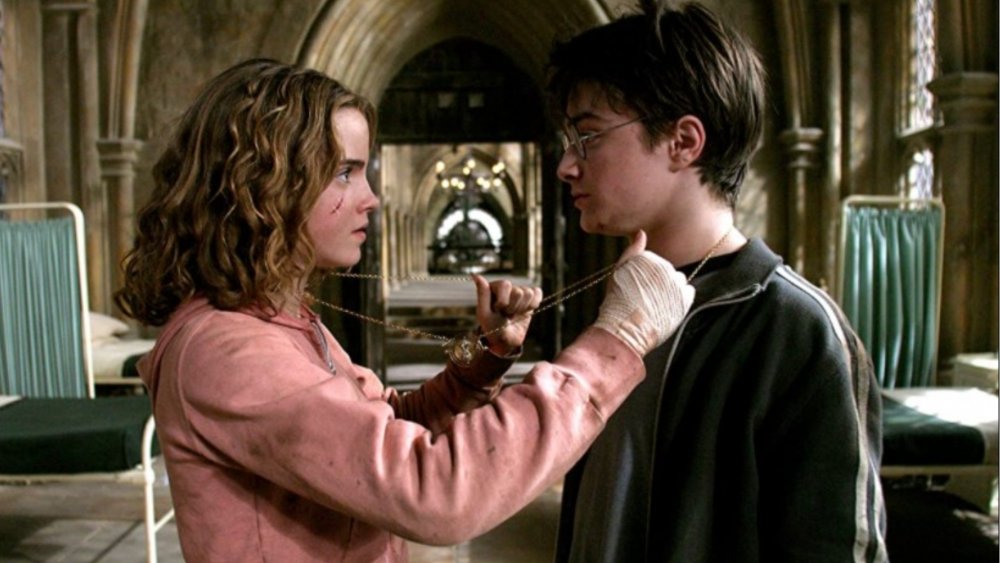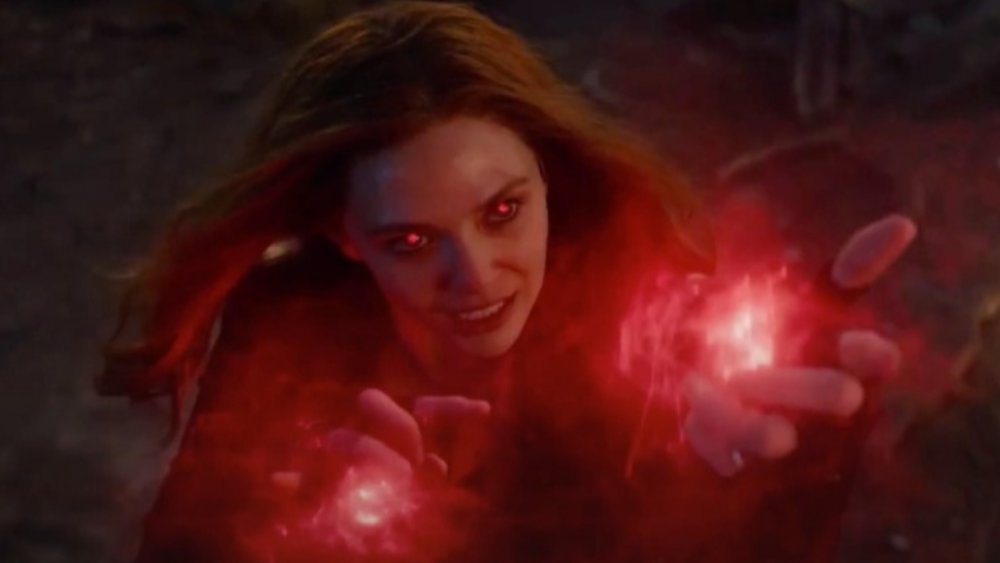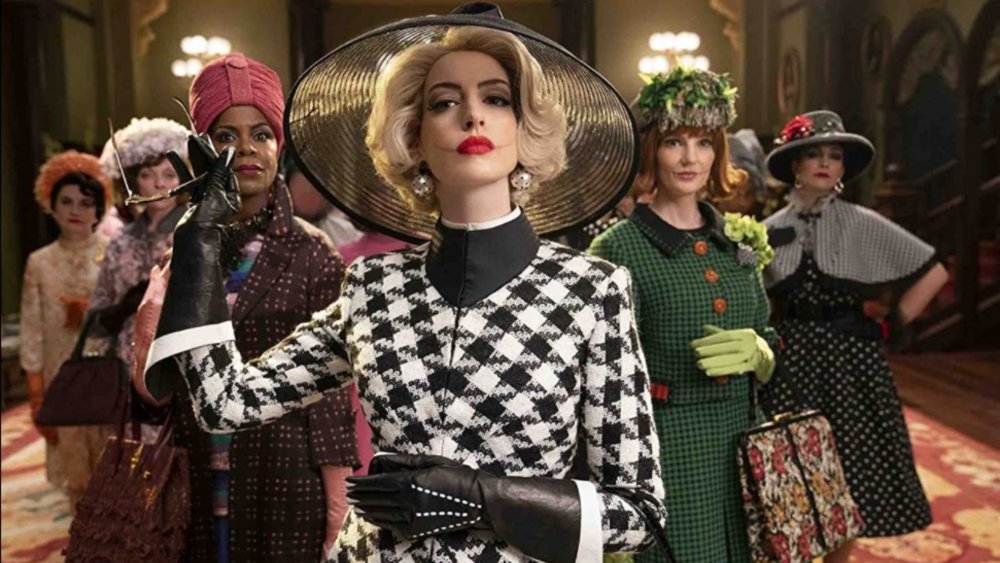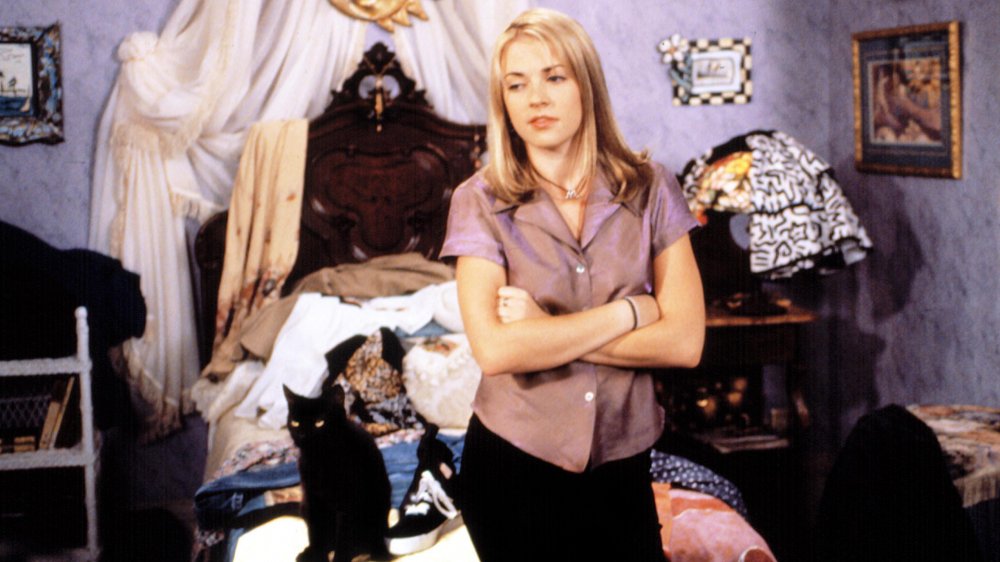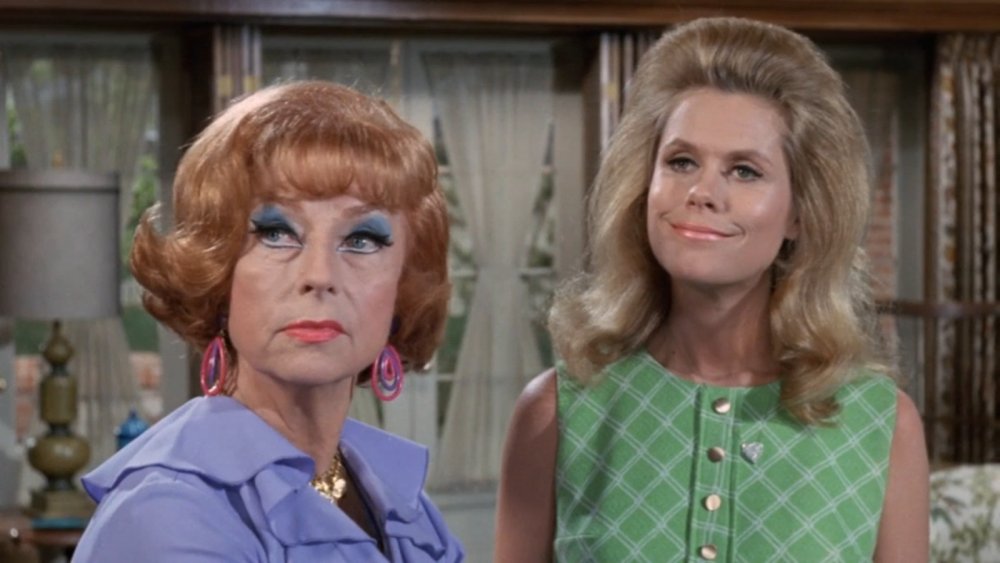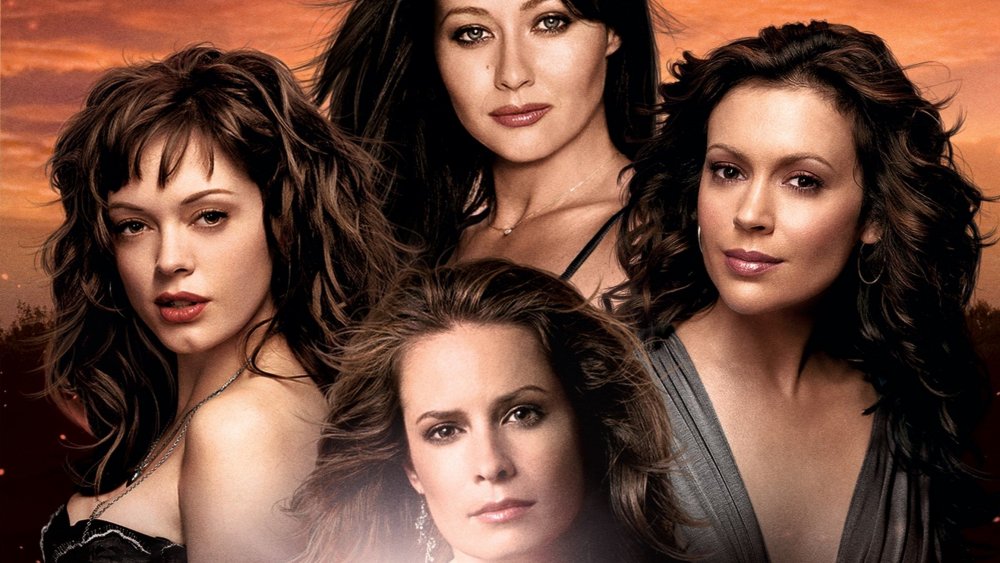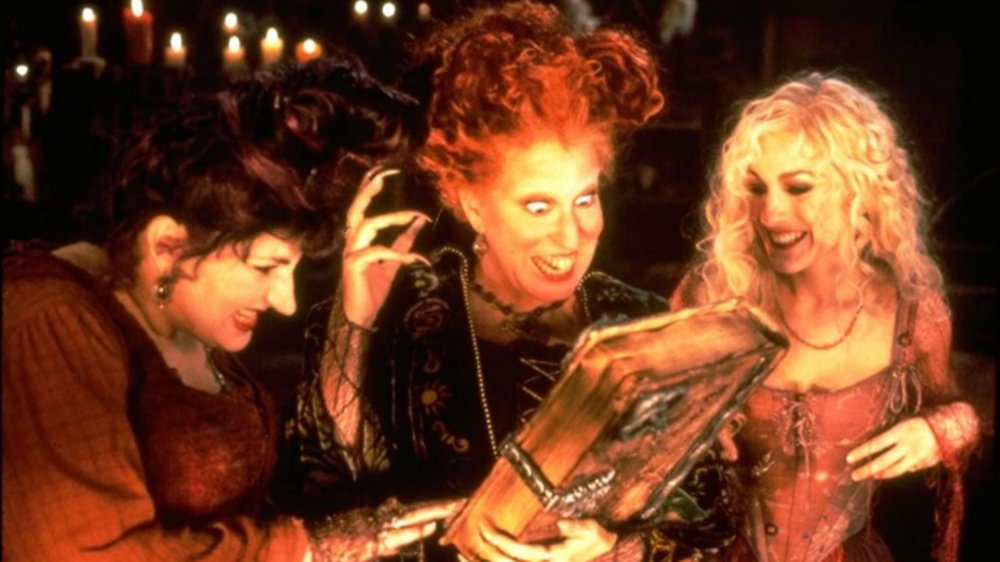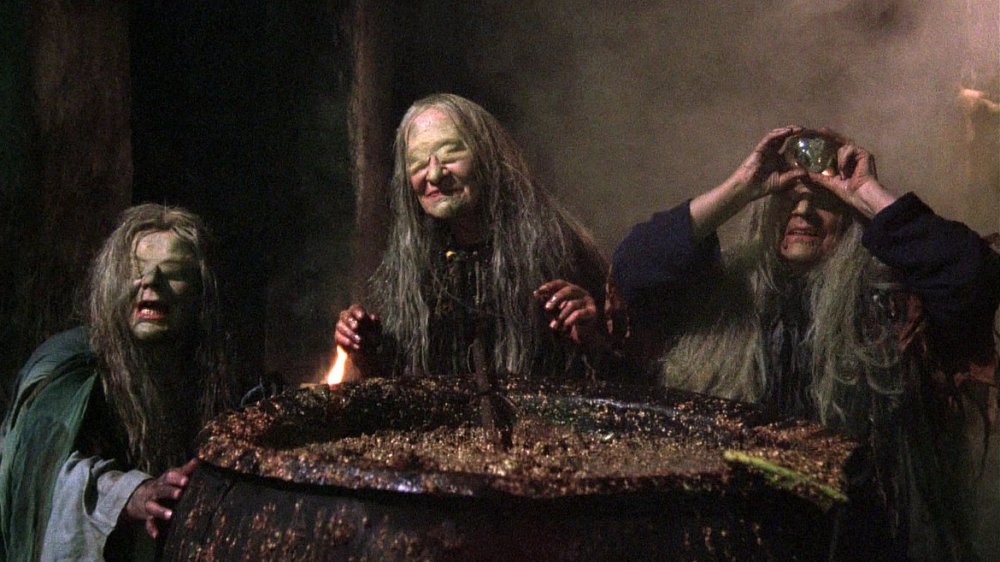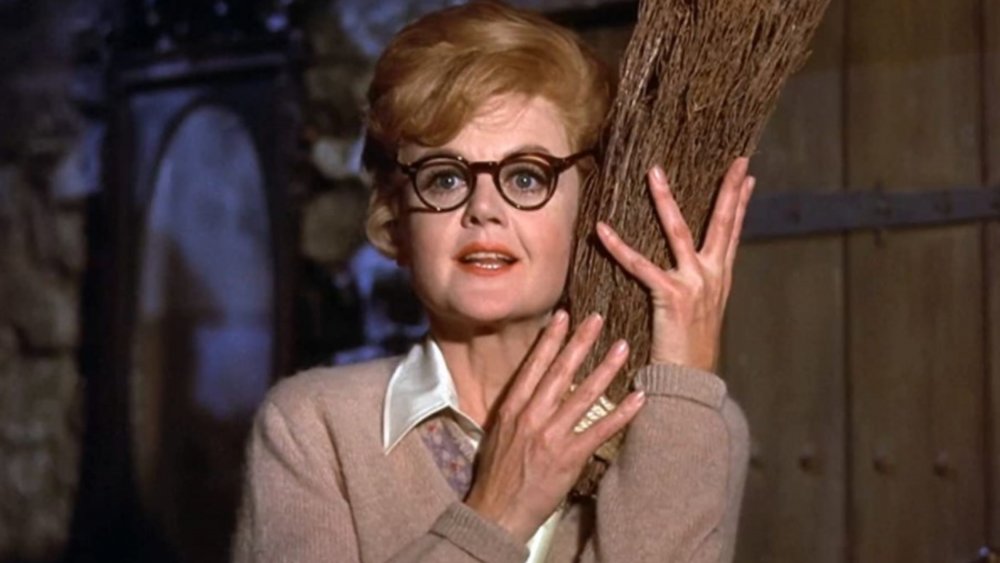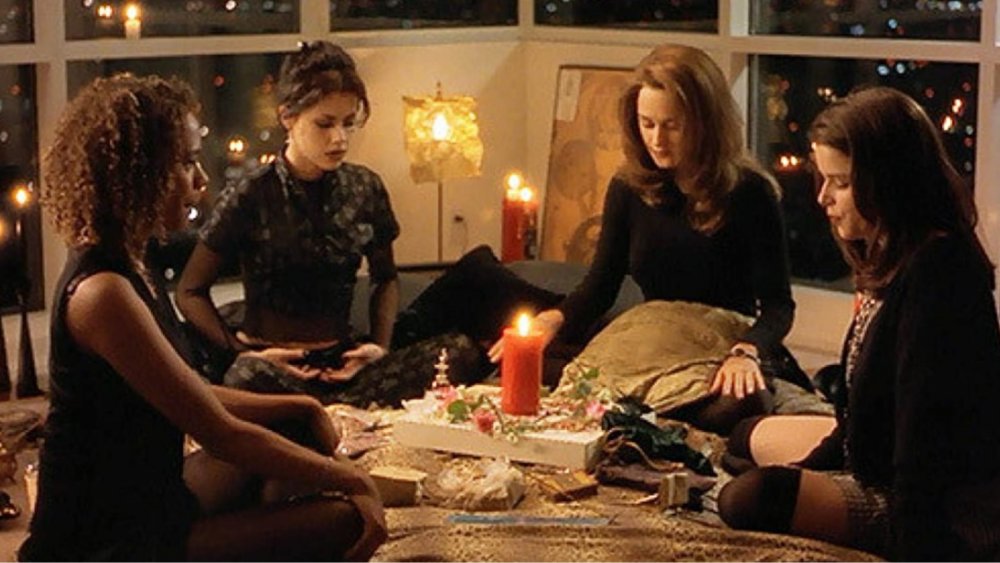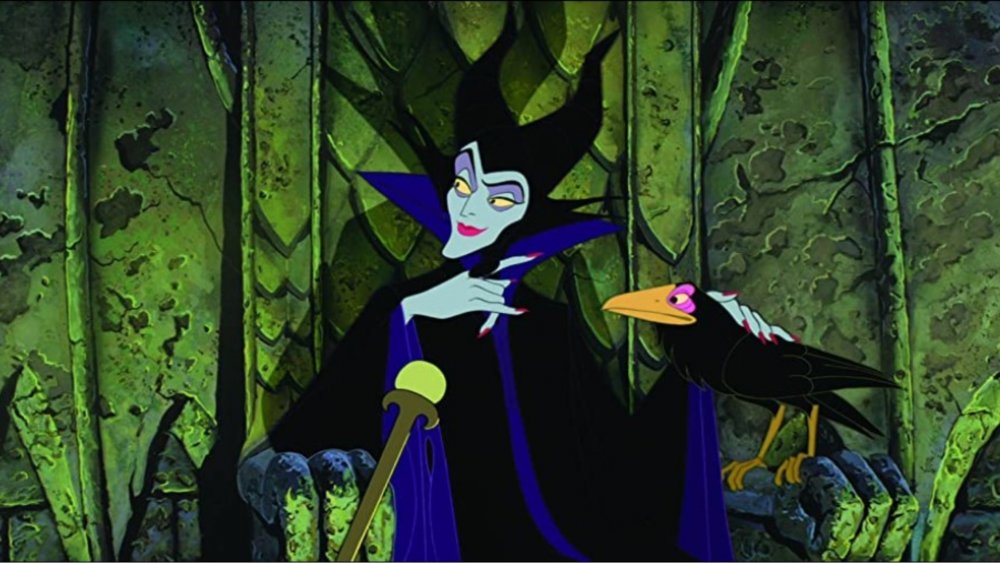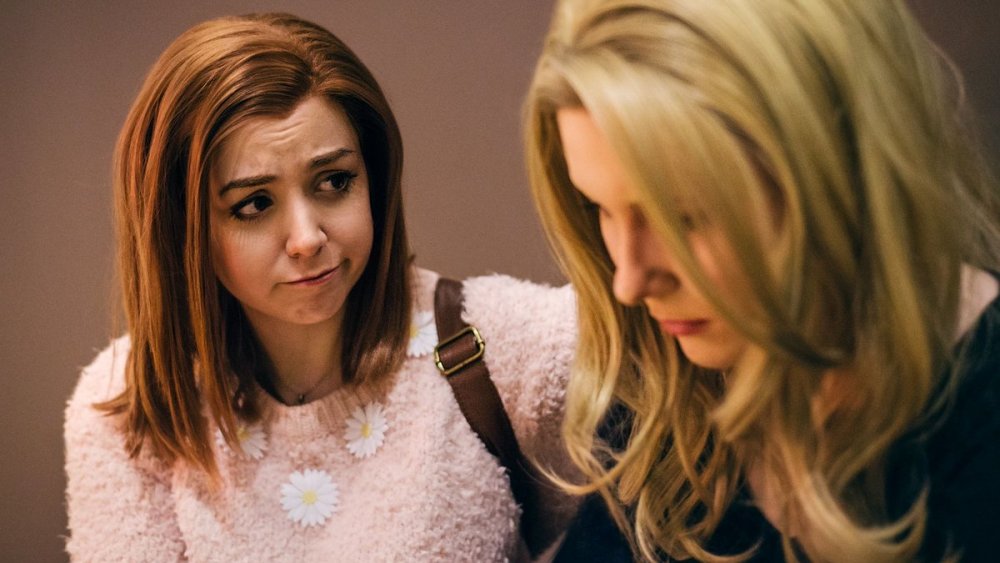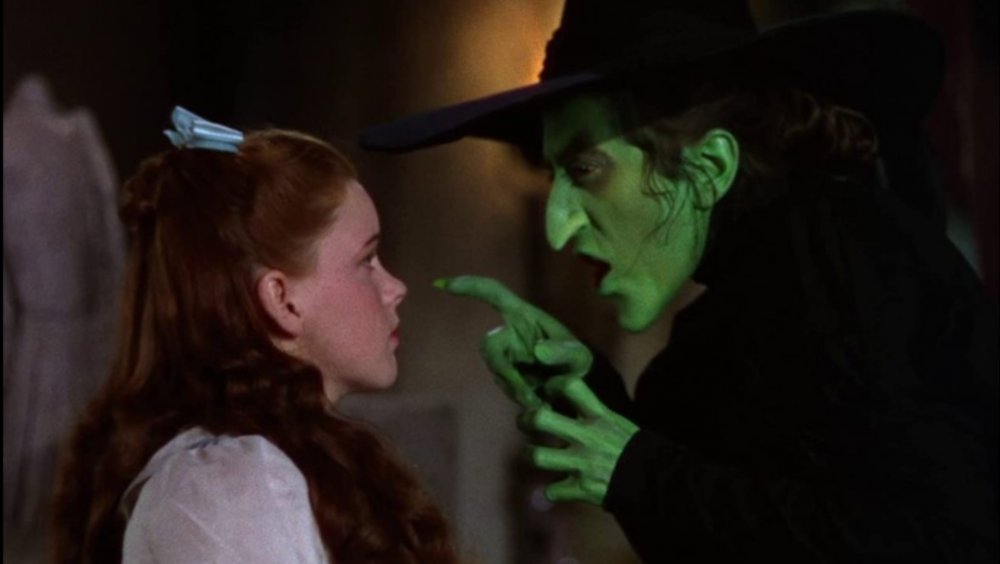The Most Iconic Pop Culture Witches
We may receive a commission on purchases made from links.
Witches get special attention around Halloween, but they captivate us year-round. After all, who doesn't wish for a little magic now and then? Not all witches are wicked, of course, but all of them tend to beguile us, mostly because of the fantastical things they can do. Cast spells, tinker with time, change their appearance, fly... They're practically superheroes! (Well, one of them on our list is.)
Whether they swoop across the sky on a broom, twitch their noses to set mishaps right, cackle over a cauldron, battle demons, or travel under the sea and back in a snap, there's no telling which way a story will go once a witch enters the picture. Which, come to think of it, is exactly as it should be.
We've rounded up a baker's dozen (that's a lucky 13) of pop culture's most iconic witches for days when you're witchful thinking. Hopefully, this overview will help avoid confusing questions like "Which witch is which?"
Hermione has the bright stuff
Brainy girls everywhere found a kindred spirit in Hermione Granger the moment the 11-year-old shot up her hand in class at Hogwarts School of Witchcraft and Wizardry, not shy about knowing any correct answer. Hermione (Emma Watson) is a "mudblood" — a magical offspring born to nonmagical parents — but she's more than a bossy know-it-all.
Her opinionated attitude sometimes masks her insecurities, something hard to spot when she's correcting Ron Weasley (Rupert Grint) about the pronunciation of a levitation spell ("It's Levi-OH-sa, not Levio-SAH") or chiding Harry Potter (Daniel Radcliffe) for wanting to face danger on his own: "I've always admired your courage, Harry, but sometimes, you can be really thick." Yet over the course of seven books and eight films, she proves to be a reliable and loyal friend who does what's right, full of logic, intelligence, and fire.
There's no magical puzzle, spell, or dilemma that Hermione can't figure out, even if she needs a Time-Turner to be in multiple places at once. As Professor Lupin (David Thewlis) once noted admirably in 2004's Harry Potter and the Prisoner of Azkaban: "You really are the brightest witch of your age I've ever met."
Scarlet Witch sees red
Wanda Maximoff, a.k.a., Scarlet Witch, gains her powers as a scientific test subject in the Marvel Cinematic Universe, but in the comics, she taps into genuine magic energy. Her powers bring joy — such as when she draws on magic energy to give birth to twin boys — and tragedy, such as when her reality-warping "chaos magic" goes wild in her grief over losing her children.
On the page, Scarlet Witch been known to revive characters from other planes of existence, generate armies from thin air, and alter reality to the point of permanently shifting every possible future. On the screen, Wanda (Elizabeth Olsen) first turned her telepathy, telekinesis, and energy manipulation against the Avengers in a revenge plan against Tony Stark. But after learning that the artificial intelligence program Ultron (voiced by James Spader) planned to wipe out humanity to ensure peace on Earth, she and her brother Pietro, a.k.a. Quicksilver (Aaron Taylor-Johnson), switched sides.
Since Pietro's death, she's been loyal to Captain America (Chris Evans), Hawkeye (Jeremy Renner), and Vision (Paul Bettany), the artificial being who became her sweetheart. She's also a formidable opponent, killing Thanos' daughter Proxima Midnight on the battlefield in Wakanda in Avengers: Infinity War and nearly ripping Thanos (Josh Brolin) to pieces in Avengers: Endgame. Only calling in an airstrike saved him from her wrath.
Roald Dahl's Witches want those brats, er, rats exterminated
British author Roald Dahl (Charlie and the Chocolate Factory, James and the Giant Peach) dipped into darker territory with The Witches, published in 1983. A boy living with his grandmother — a retired witch hunter — discovers the existence of child-hating witches all over the world and their plan to turn children into vermin so that unsuspecting adults kill them. Trying to stop the Grand High Witch, the young hero transforms into a mouse, although with his voice and personality intact. He and his grandmother join forces against the Witches, but their battle isn't easy. Holy whiskers!
These witches have captivated and rattled readers and audiences ever since, adapted into a BBC radio drama, an opera, and a 1990 film with a frightening Anjelica Huston as the Grand High Witch. (Dahl was none too pleased about the ending of that version, which was more upbeat than the one he originally wrote.)
Oscar-winner Anne Hathaway stepped into the Grand High Witch's heels for a fresh film adaptation in 2020, with fellow Oscar-winner Octavia Spenser as the young protagonist's grandma. Hathaway definitely brings on the glam, but readers know that her elegant blonde hairdo is a wig disguising the Grand High Witch's bald head — and those gloves hide claws where fingernails would be.
Sabrina, the eternally teenage witch
Sabrina Spellman might have been introduced as a 16-year-old witch on TV in the 1970s, the 1990s, and later in 2018. But the character is old enough to drive more than a broom, having debuted in the Archie Comics series in the 1960s.
In her 1970s animated form, Sabrina's wacky aunts accidentally created the groovy girl who fought evil forces by bumping into each other and adding "beautiful girls' stuff." The family sitcom from 1996 to 2003 skipped all that, having Sabrina (Melissa Joan Hart) discover her powers on her 16th birthday. She still lived with her aunts, who trained her in the proper use of magic, but with a "genial loopiness" that included turning a rival into a pineapple and tossing "truth sprinkles" on cupcakes, as well as caring for an acerbic talking cat named Salem. (He's a cursed human. That's a whole other story.)
Yet much like Riverdale updated the Archie Comics crew for a modern generation, Sabrina got an upgrade too. Netflix's The Chilling Adventures of Sabrina, starring Kiernan Shipka (Mad Men) in the title role, leans heavier on supernatural horror elements as Sabrina tries to maintain a normal life while learning witchcraft — and fighting evil forces threatening her family and the world. That's a lot to cast on any young woman; then again, high school always has had a lot of drama.
A housewife and mom keeps her family Bewitched
When beautiful witch Samantha (Elizabeth Montgomery) married a regular mortal, advertising executive Darrin Stephens, she promised to leave spell-casting behind for an ordinary life in the suburbs. But the popular sitcom Bewitched, which ran from 1964 to 1972, forced Samantha to use magic in every episode, usually to correct some zaniness from her mother Endora (Agnes Moorehead) and extended family. Samantha's family never approved of the marriage and often put some sort of spell on Darrin or meddled with his boss and their neighbors.
Samantha often was surprised or exasperated, but she was also chipper, clever, and determined, twitching her nose (with musical twinkles) to undo whatever had happened through special effects that now seem amusingly quaint. Samantha and Darrin even had a daughter, Tabitha, who inherited her mom's powers, although she had to wiggle her own nose with her finger for her spells to work.
Three sisters who lead a Charmed life
The Halliwell sisters of San Francisco enchanted viewers in TV's fantasy series Charmed for eight seasons on the WB, starting in 1998 when Prue (Shannon Doherty), Piper (Holly Marie Combs), and Phoebe (Alyssa Milano) discovered their family's Book of Shadows in the attic — along with their previously unknown powers. Prue had telekinesis and astral projection, Piper could freeze people or objects in time, and Phoebe initially had the power of premonition, later developing levitation and empathy.
Following their family's legacy, the sisters swore to protect the world's innocents from warlocks, demons, and other evils with occasional assistance from their "whitelighter," Leo (Brian Krause). A type of guardian angel, Leo eventually married Piper, any rules against workplace romance be damned.
When Doherty left the show after the third season, the plot had a demonic assassin kill Prue. But Piper and Phoebe became aware of a half-sister, Paige Matthews (Rose McGowan), their mother's secret love child who had been adopted. Paige had the power to teleport objects and herself and later gained other abilities, including healing.
For all of the sisters' evil battles, the show blended humor with heart, highlighting the strength of family and friends. The sisters were more powerful together than apart, frequently invoking "The Power of Three" to form a mighty front. The CW rebooted Charmed in 2018 with another trio of good witches — Melonie Diaz, Madeleine Mantock, and Sarah Jeffery — proving yet again that three is a magic number.
Just a bunch of Hocus Pocus
Like abracadabra, the phrase hocus pocus signifies some sort of magic — like resurrecting three villainous but comedic witches on Halloween. The 1993 film Hocus Pocus stars Bette Midler, Kathy Najimy, and Sarah Jessica Parker as Winifred, Mary, and Sarah Sanderson, respectively. Back in the 1600s, the sisters killed a child by absorbing her youth, but they escaped execution through a curse that Winifred arranged should certain circumstances occur during a full moon on Halloween.
Naturally, 300 years later, a youth new to Salem, Massachusetts lights a candle and inadvertently brings back the sisters while trying to impress a girl. The witchy siblings keep trying to absorb children's souls to stay alive even as they're mystified by the 20th century. Meanwhile, the kids figure out how to disintegrate them for good. The film has become a family favorite and an annual cause for celebration in Salem, thanks in part to the three leads, who play off each other hilariously.
"Why? Why was I cursed with such idiot sisters?" Winifred rants at one point.
The clueless Sarah replies, "Just lucky, I guess."
For the Stygian witches, the eye has it
Shakespeare's Macbeth has witches. So does Greek mythology, brought to life with the help of stop-motion visual effects wiz Ray Harryhausen (Jason and the Argonauts) in the 1981 film Clash of the Titans. Loosely based on the myth of Perseus, the son of Zeus, the film sends Perseus (Harry Hamlin) on a quest to save his beloved Andromeda (Judy Bowker) from death. Andromeda's mother lands the lovers in this predicament when she brags that her daughter is more beautiful than anything on Earth or in the heavens, even the goddess Thetis (Maggie Smith). Greek goddesses (and gods, for that matter) never liked such boasting, so Thetis orders Andromeda fed to a sea creature called the Kraken.
With no Google to offer a possible solution, Perseus consults the Stygian witches, a trio of cannibalistic hags who share an "eye" — a magical glass orb — that helps them to see. (One witch sizes up Perseus and tells her sisters that he's "not plump but well-made.")
With the help of his robotic owl Bubo from the goddess Athena, Perseus gets his hands on the eye, then forces the witches to tell him how to defeat the Kraken. The head of Medusa can turn it to stone, they say. Just beware of her blood, which is poisonous.
Satisfied, Perseus returns their orb, tossing it over their heads. "Catch!"
A lion and Bedknobs and Broomsticks -- Oh my!
Decades before she voiced the motherly Mrs. Potts in Beauty and the Beast, Angela Lansbury dazzled Disney audiences in 1971's Bedknobs and Broomsticks as Miss Eglantine Price, an unlikely but capable witch earning her stripes through a correspondence school. Miss Price reluctantly agrees to look after three orphaned children during World War II, then entrusts them with her secret after they see her trying to fly on a broom. She casts a transportation spell on a bedknob, enabling herself and the children to travel to London on a bed and locate the professor (David Tomlinson of Mary Poppins) who can declare her a graduate. Trouble is, the last spell he needs her to complete is missing from his spell book — and found only on a remote island inhabited by animated animals.
Miss Price may be a proper Englishwoman of her day, but she's also unflappable. She carries on whether she's singing and dancing under the briny sea, encouraging the professor as he referees animal football (that's soccer to Americans), or protecting her seaside village from Nazi commandos using enchanted suits of armor. When you need "Substitutiary Locomotion" or a warm, grounding element for a fantastical journey, conjure up an ally in Eglantine Price.
Teen angst goes awry in The Craft
Angst and experimentation bring together the teen coven of 1996's The Craft. Outcasts Bonnie (Neve Campbell), Nancy (Fairuza Balk), and Rochelle (Rachel True) invite Sarah (Robin Tunney), the new girl in town, to make their group complete after they notice her levitating a pencil in class. The girls soon practice levitating Rochelle, chanting "light as a feather, stiff as a board," then try other spells like changing their appearance, giddy over their heightened powers.
Their friendship is short-lived as things spin out of control, with Rochelle casting a spell on a bully, Bonnie becoming narcissistic, and Nancy becoming more zealous, using her magic to kill others and summon a potent spirit. Sarah tries to prevent Nancy from doing additional harm, splintering the coven, then learns she's better off — and much stronger — alone. The witches of The Craft succumb to jealousy fairly quickly, but critics noted that their "campy magic ... and postmodern perspective still cast a sporadic spell."
The marvelously malevolent Maleficent
Disney has quite a few witches in its magical cupboard. In addition to Eglantine Price of Bedknobs and Broomsticks, there's Snow White's wicked queen — who changes her appearance and poisons an apple for poor Snow – and Mad Madam Mim, the frumpy yet overconfident duelist against Merlin in The Sword in the Stone. But for pure malevolence, few can match Maleficent from 1959's Sleeping Beauty. Who curses a baby to sleep forever just because she wasn't invited to the christening party?
The self-proclaimed "mistress of all evil" tends to be the smartest one in the room. (Her minions, searching for the hiding Princess Aurora, kept checking cradles over the years, not realizing the princess would grow.) She's also frightening for young viewers, whipping up a forest of thorns to prevent Prince Phillip from reaching his sleeping beloved, then changing into a whirlwind and, finally, a dragon as fierce and imposing as the horns she sports throughout the movie.
The 2014 live-action film Maleficent humanized her through Angelina Jolie's performance, but the animated version (voiced by Eleanor Audley, the heroine's cruel stepmother in 1950's Cinderella), is a witchy villain for the ages.
Willow from Buffy the Vampire Slayer
Over seven seasons of Buffy the Vampire Slayer, while Buffy (Sarah Michelle Gellar) used her supernatural skills against vampires and other evils, her shy friend Willow Rosenberg (Alyson Hannigan) grew into a confident witch, thanks to uncovering her own magical abilities. Willow's nerdiness and empathy — and Hannigan's performance — made her a fan favorite. (She once noted, totally deadpan, "Occasionally, I am callous and strange" and has cutdowns such as, "I've seen honest faces before. They usually come attached to liars.") Willow has the most growth out of the show's supporting cast, initially dating Oz (Seth Green), a werewolf, in the early seasons before falling in love with Tara (Amber Benson), a member of her Wiccan group.
As Willow's magical knowledge grows, so do her ethical quandaries. She kills Glory, a goddess banished to Earth from a hell dimension, then later brings Buffy back from the dead. Willow also becomes addicted to using magic, causing Tara to leave her. The couple reconciles, but another of Buffy's enemies mistakenly kills Tara. Rage and grief turn Willow dark, but the compassion of her and Buffy's friend Xander (Nicholas Brendon) brings her back from the brink.
Fearful of losing control again, Willow studies with a coven to heal. Feeling vulnerable and insecure, she nevertheless comes to Buffy's aid in the series finale, casting a spell that makes her glow white like a goddess so Buffy and others like her can triumph.
The Wicked Witch of the West
The Wicked Witch of the West in 1939's The Wizard of Oz might not be the first green-skinned witch in a black pointy hat, but she's enduringly memorable thanks to the all-in performance of Margaret Hamilton. Hamilton's Miss Gulch is pretty nasty to Dorothy (Judy Garland) back in Kansas, insisting on euthanizing Dorothy's dog, Toto, after Toto bites Gulch on the leg. But Hamilton really makes an impression in Oz with what the New York Times called her "saber-like nose, arrowhead chin, and a withering scowl," not to mention her poisonous cackle. (Hamilton, who died at age 82 in 1985, had been a kindergarten teacher before her acting career.) Whether skywriting threats to Dorothy, menacing the Scarecrow with fire, or flipping over an hourglass to show Dorothy how much time she has left alive, this witch gives youngsters an everlasting glimpse of evil — but one reassuringly dispelled once you're safe at home.
Years later, the hit Broadway musical Wicked (based on Gregory Maguire's 1995 novel) cast the Wicked Witch of the West in a new light. It introduced her as Elphaba, a girl facing discrimination because of her green skin, and showed her friendship with Glinda the Good Witch, the Wizard's corruption, and how multifaceted people can be. The original Elphaba, Idina Menzel (Elsa in Frozen), deserves a special shout-out for a voice that defies gravity.
